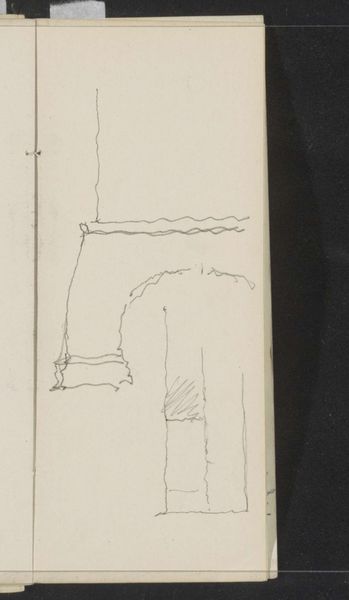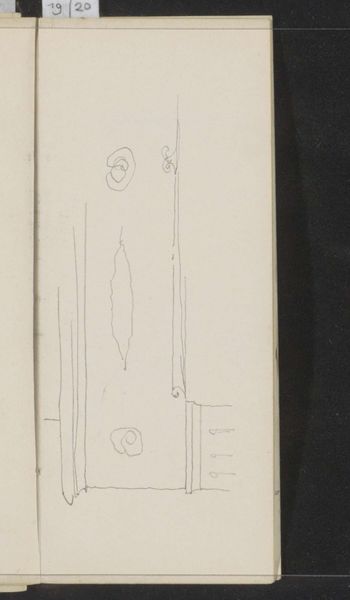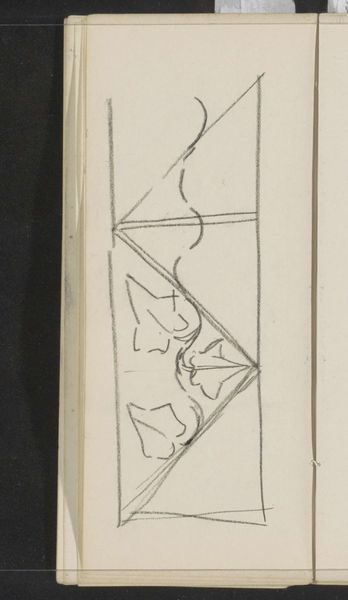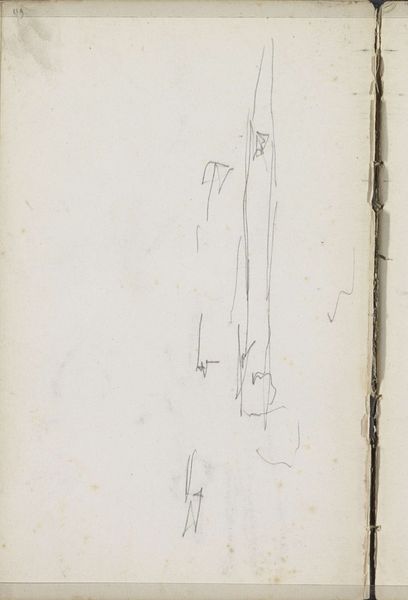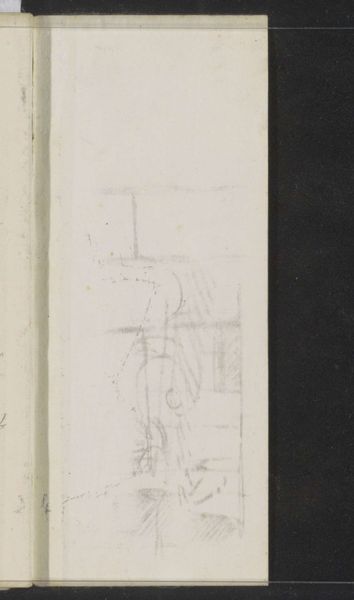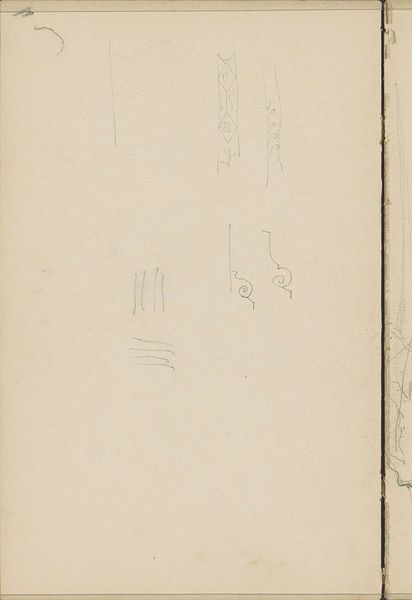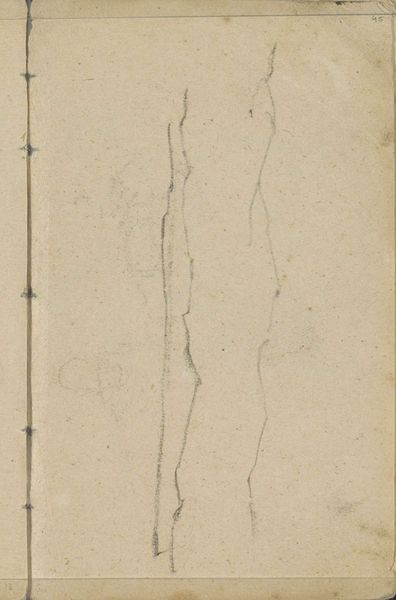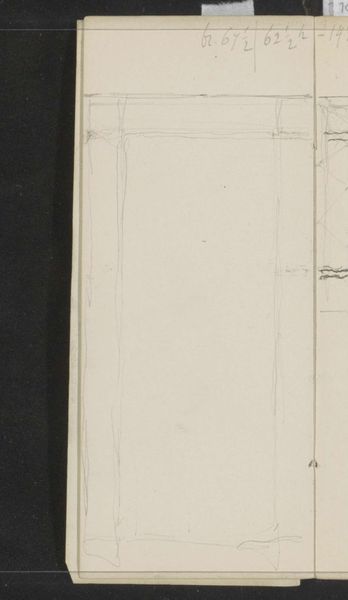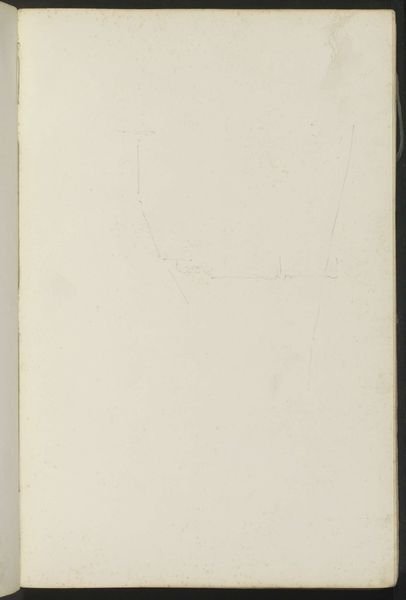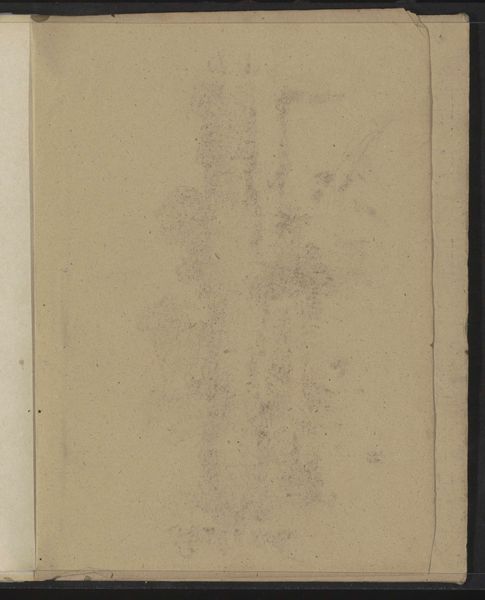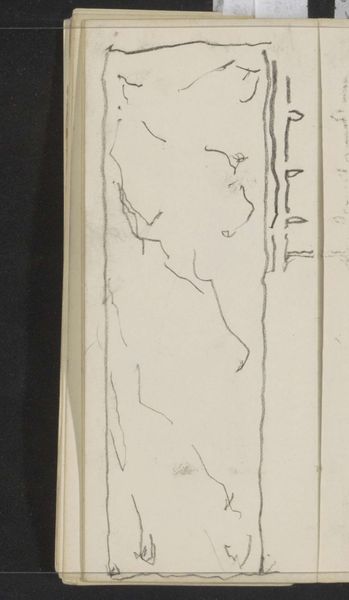
drawing, paper, pencil, architecture
#
drawing
#
paper
#
geometric
#
pencil
#
abstraction
#
line
#
architecture
Copyright: Rijks Museum: Open Domain
Editor: Here we have Gerrit Willem Dijsselhof's "Studie," a pencil drawing on paper, made sometime between 1876 and 1924. It's surprisingly abstract, almost like an architectural fragment remembered in a dream. What do you see in this piece, something so minimal? Curator: Indeed, it whispers rather than shouts, doesn’t it? Notice how Dijsselhof uses line – a delicate tracery hinting at forms both structural and organic. I see echoes of ancient pillars, perhaps, or even the stylized depiction of a tree reaching upwards. What emotional or psychological resonance do these archetypal shapes evoke for you? Editor: I suppose a feeling of something ancient and solid, maybe a bit weathered or incomplete. Like finding a ruin. Do you think that was his intention? Curator: Perhaps not consciously, but symbols accrue meaning over time. The pillar is often associated with strength, stability, and connection to the divine, while incomplete forms might represent the passage of time or the ephemeral nature of existence. Do the geometric lines intersecting the curves suggest conflict or harmony to your eye? Editor: I see tension. The sharp angles meeting the fluid lines… it’s a bit unsettling, actually. Curator: Precisely. Dijsselhof might be exploring the inherent human need to impose order—geometry—upon the fluidity and apparent chaos of the natural world, and that eternal conflict gives it lasting emotional power. It's about the relationship. Editor: That makes me think of how we are always trying to categorize and understand things, even something as simple as a quick sketch. I hadn't considered the symbolism until now. Curator: It's a reminder that even seemingly simple forms carry profound cultural and psychological weight. Line becomes language. Editor: Definitely. It's made me think about how artists can embed such complex ideas in seemingly simple images. Curator: And that’s the beautiful, enduring power of art.
Comments
No comments
Be the first to comment and join the conversation on the ultimate creative platform.
